Ring! Ring! Ring!
We often do work for museum groups. Mostly it’s research related projects or field studies, but every now and then we get to put other skills to work. And you thought all we did was write and photograph – little known fact, we also fix old telephones here, when time permits. The Galt Historic Railway Park, Stirling Alberta, acquired a large consignment of vintage telcom equipment and asked for our expertise in helping set up an exhibit at the museum showcasing them. We’re in! Let’s get our hands dirty.
What we’ll be showing here is work in progress, a big job that really has only just started, that will probably take many, many months or more to complete. One of the first tasks was to pick out phones destined for display. These are set aside for now and will likely be the subject of another report later on (you can see some of them in the photos). The next step: sort, clean, test and repair the “leftovers”, so they can be sold (working models that will function fine in 2015, and non-working display only examples, some of each), with the resultant funds being channelled back into museum coffers. Want to buy one? Keep reading.
Join us as we document some of the work we did this day. We thought you might find it interesting.
Our workshop is an ancient railway passenger car located at the park. We set up a table and start at it. It’s a production line of sorts – phones are quickly assessed to see they’re complete, if the dial works and so on. From there, one by one, they’re cracked open, rewired as needed and tested. Ones deemed uneconomical to repair are set aside. Some will be used as parts sources, others cleaned up and sold for use as decorative accessories (not everyone wants a working phone).
Speaking of which, any listed in working order, will function just fine on any major land line network. Sometimes staff at the telcos don’t know that, so if they say it can’t be done, it’s likely in error. It’s not common knowledge especially with younger people working in customer service there (aka, the trenches), most who’ve probably never even seen a rotary phone.
The phones and all that other telco gear, a big van load of it, was donated to the Galt Railway Museum and comes via a phone enthusiast group. The museum actually inherited it all over a decade ago, but couldn’t really do anything with them for a million different reasons, space or lack of it, being perhaps one issue. They’ve recently acquired some vintage railway passenger cars and are in the process of cleaning them out so they can be used to hold displays and exhibits and things like that. This is where the phones and that other telco gear will be eventually be located for visitors to view and interact with.
The donated gear included a good mix of old phones. Of course, Northern Telecom (earlier Northern Electric) models predominate. That firm was the largest telephone supplier in the country for much of the last century. The most common rotary phone is the Western Electric (USA) designed NE500 (sometimes called Northern Telecom/Northern Electric WE500). You know off them – it’s likely you family had one. Remember the ringer? Even you neighbours knew when you had a call, They were that LOUD!
While NE500s mostly came in black, many other colours were offered. Some are more common than others (we found a few less-common ones in the mix this day). This model was in production, in Canada, from the late 1940s into the 1980s, and even later in the US.
The firm ITT also made this model. They had a factory in Canada and made NE500s under license. Outside company markings you couldn’t really tell them apart from Northern Electric, Northern Telecom or even Western Electric produced examples of the same model.
Most of the NE500 models seen (some are sub-models) in the donated lot are from the 1960s and 1970s. The red desktop is the newest, it’s from 1985 and was made by ITT. This is the only one that has the “modern” internals (introduced a few years before). The yellow desktop seen, has a teal dial, telling us someone combined two phones to make one. Two tone was never factory offered, that we know of.
The wall equivalent of the NE500 is the NE554. Mechanically the two are pretty similar. A few are dial-less. These might be courtesy phones that accept incoming calls only or for dedicated taxi lines or stuff like that.
Some older Northern Electric Uniphone models were found and are made of Bakelite. Nice stuff but they were gutted. We also found a few Northern Telecom NE2500 push button “touch tone” phones, the successor to the NE500. It uses a similar case. These were made from the late 1960s into the 1990s.
All Northern Telecom/Electric phones, and their US made counterparts, are quite robust and very serviceable. They’re near indestructible.
A major competitor to Northern Electric (and Western Electric in the US) was Automatic Electric. They also had a factory in Canada and made a couple models in direct competition to the NE500 and NE554. Their desktop model was the AE80 Monophone (notice how much it looks like an NE/WE500), and the wall equivalent, the AE90. Colours, based on our own experience, are kinda rare, but we found a couple in this lot.
We find an Automatic Electric AE50 “Tombstone” (sometimes called “Jukebox”), a very iconic design. Too bad it was missing parts. Another AE model set aside for museum use is from the 1920s/1930s. Nice. You might find it interesting but even a phone this old can be made to work on a modern telco network (the oldest BIGDoer has ever worked on was from 1905! – but get this, we know of some even older, still in use).
A make of phone we’ve never seen first hand is called DuKane. These were made in Austria but sold in North America for a time, it seems. Real works of art, inside and out, they’ll make someone very happy. I wish i could have one! These date from the post war period.
A European made ATEA (Automatic Electric Belgium) was found. Never seen this make first hand. Most phones in Canada, were made in Canada, so ones from outside our borders are pretty odd.
Many of the phones still have the old number listed on the centre of the dial. A number were set up for party lines (common into the 1980s in rural areas) or multi-line “company network” use. These have been rewired to work normally. A few still have Alberta Government Telephones markings.
Each phone to be sold, working or not, was given a class photo, an old switchboard providing a fitting back drop.
If you want one of the phones seen, drop us a line. But act quickly. All have been cleaned, but are otherwise EXACTLY as they were when pulled from service. Expect minor wear, dings, paint splotches, kinked cords, etc. This gives them personality! We still have more boxes to go through, so there should be more to come.
More old things…
Baby Fishbowl.
Class of ’63.
Badland’s Collection.
If you wish more information on what you’ve seen here, by all means contact us!
Date: November, 2015.
Location: Galt Historic Railway Park, Stirling, AB.
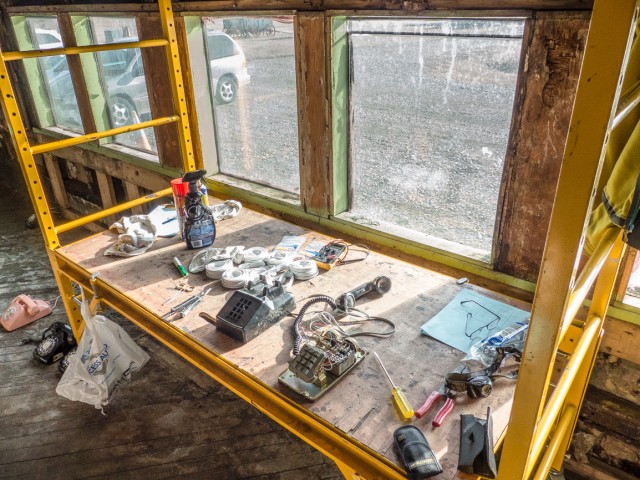
Our workshop is an old railcar at the Galt Historic Railway Park, Stirling Alberta.
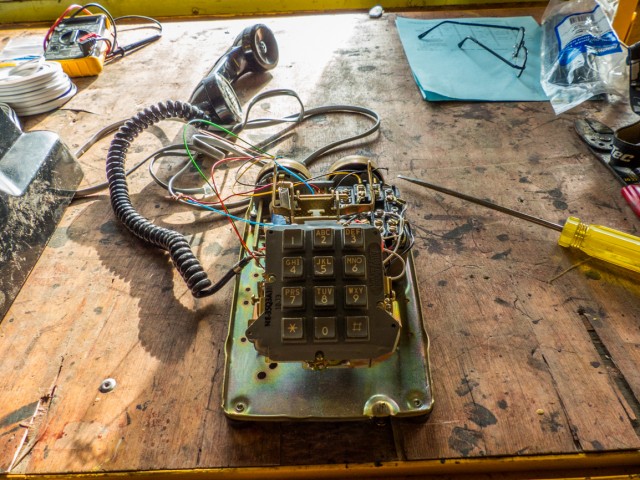
A few phones we worked on were non-rotary (but still old).
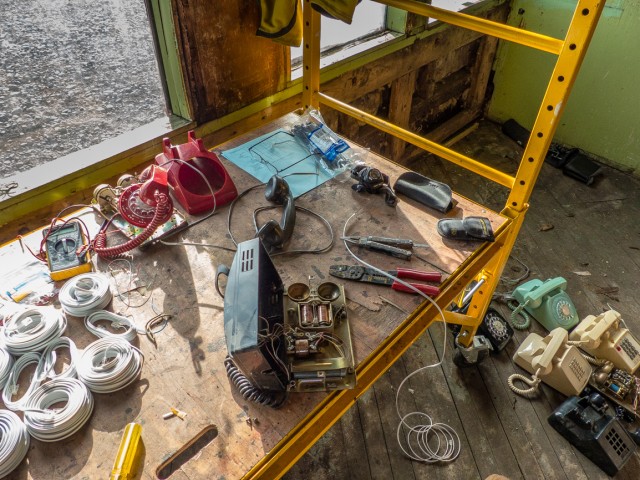
The work begins…
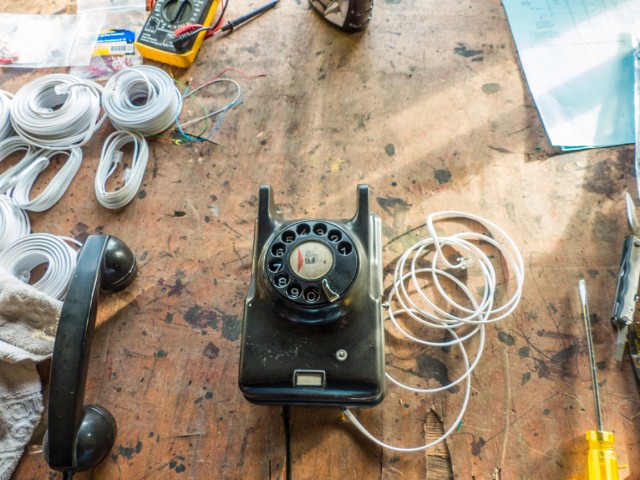
A rare (in this part of the world) DuKane wall phone, made in Austria.
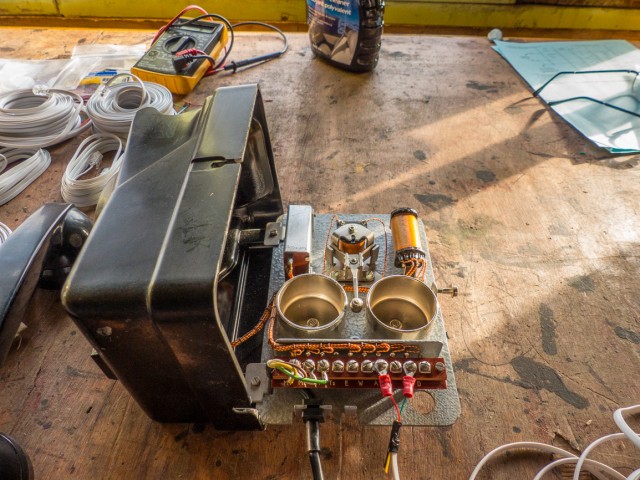
A work of art! Note temporary line cord.
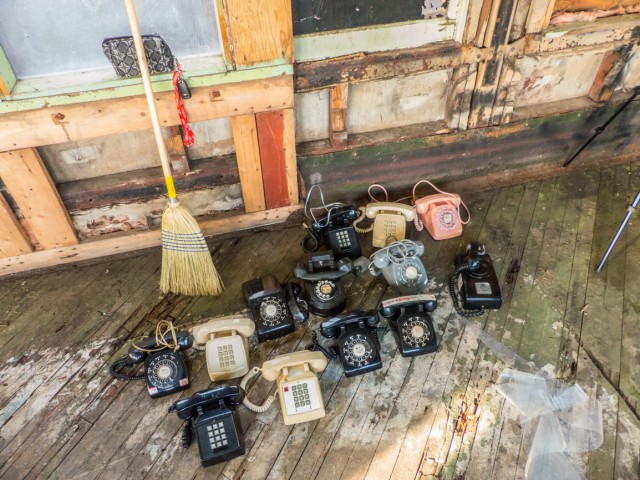
The not worth fixing pile.
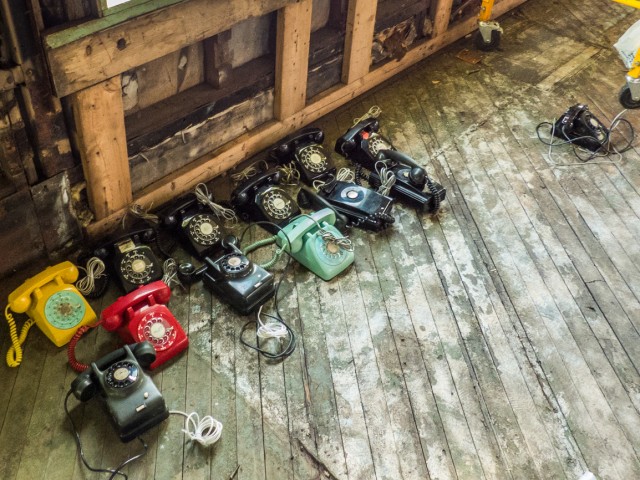
Finished ones after repair, cleaning and testing.
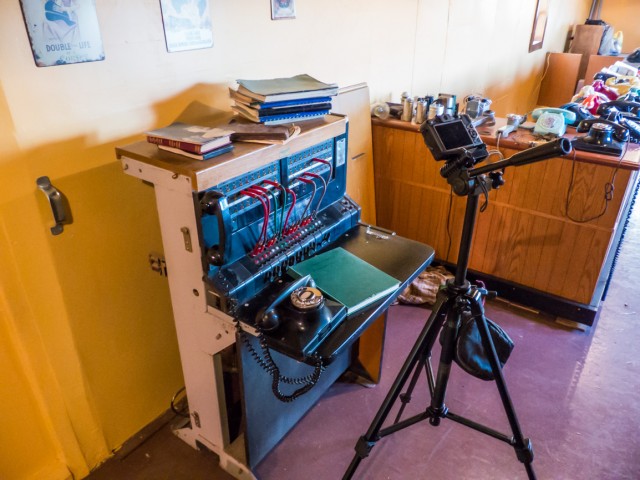
Each phone gets a class photo – an old switchboard makes a fine backdrop.
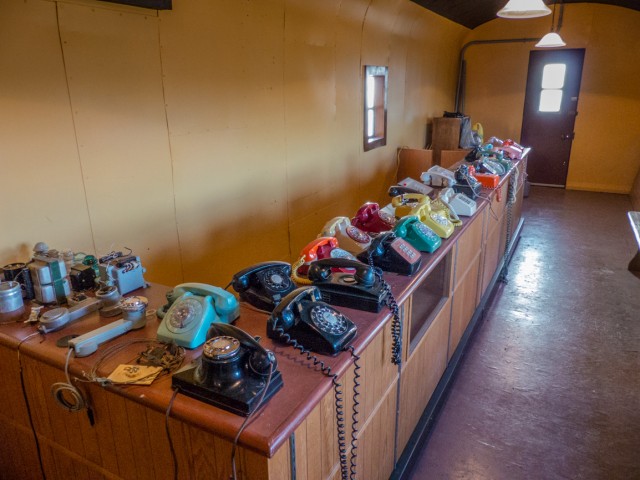
A nice mix set aside for museum use.
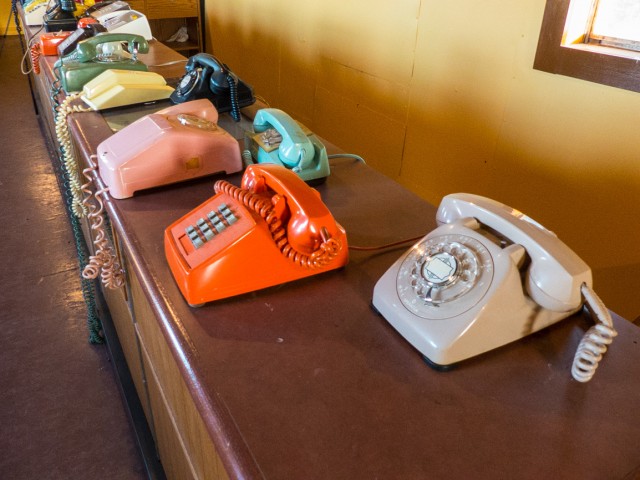
It’s a colourful collection.
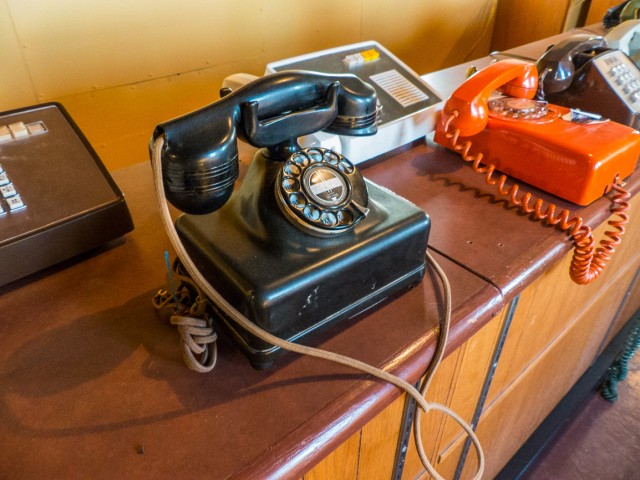
A 1920s/1930s Automatic Electric – we so wanted to take it home!
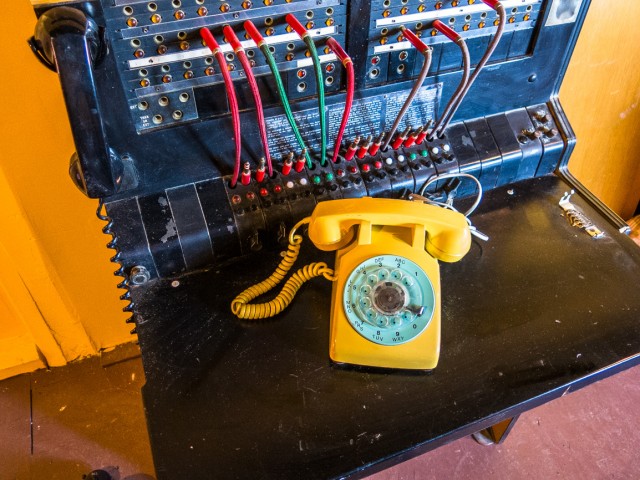
Someone combined two different colour phones to make this one.
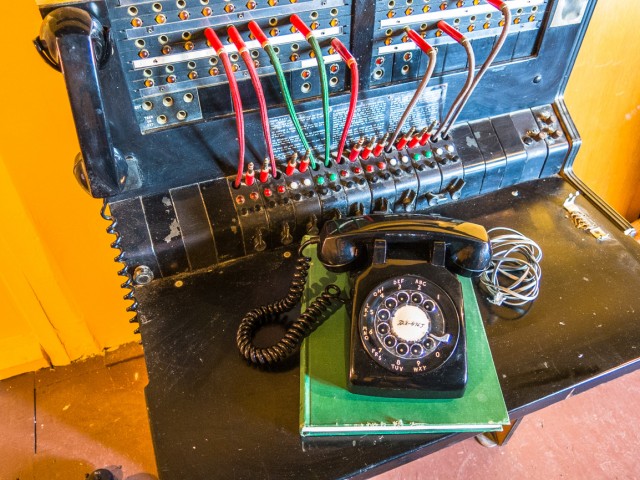
Black was by far the most common for this model (Northern Telecom/Electric NE500).
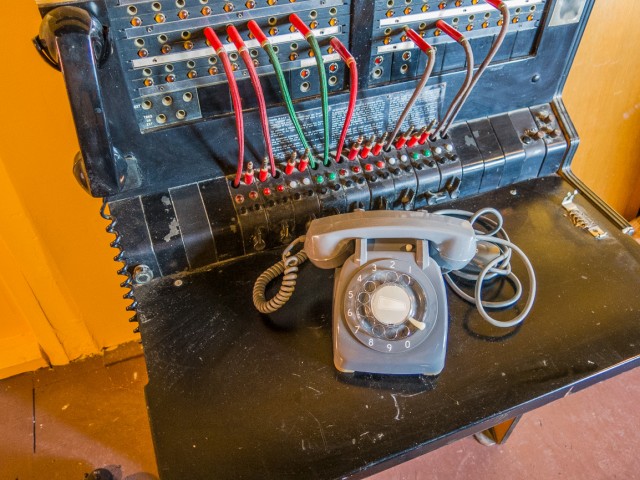
This ATEA brand phone comes from Europe.
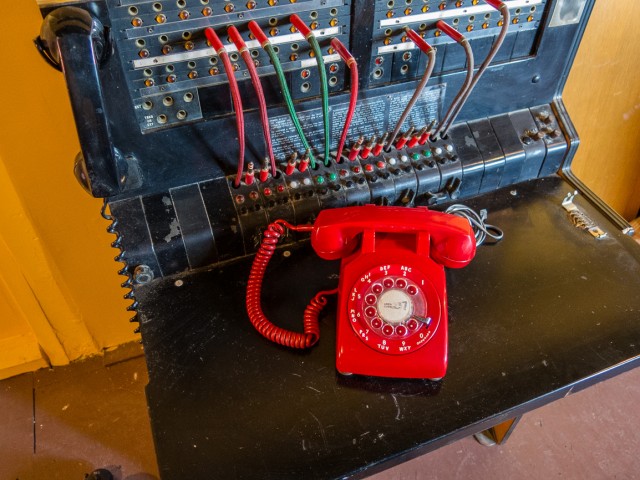
A late model (mid-1980s made) NE500 made by ITT.
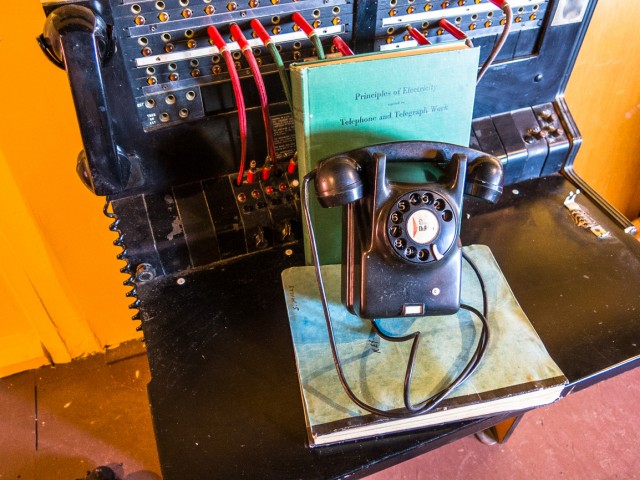
This would look good on anyone’s wall (DuKane model).
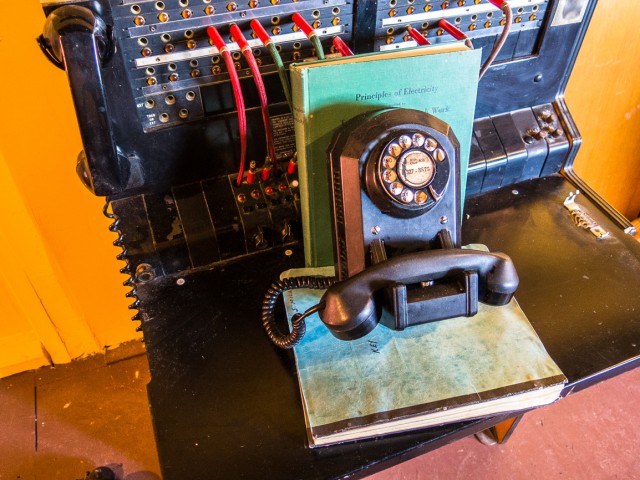
An Automatic Electric AE50 “Tombstone” (1930s-1950s).
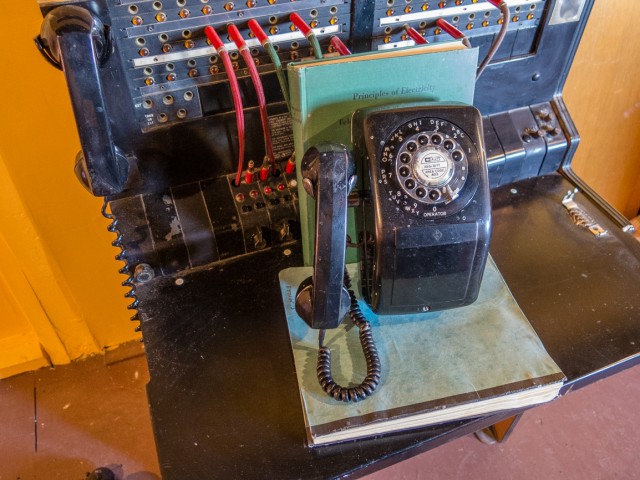
An Automatic Electric AE90 wall phone (1950s-1970s).
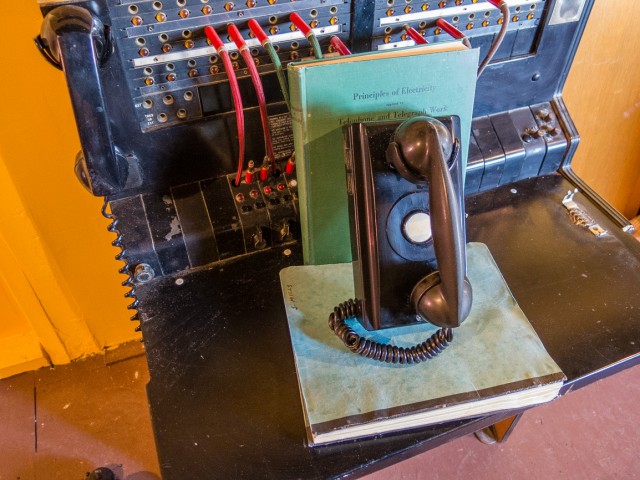
A Northern Electric NE554 dial-less.
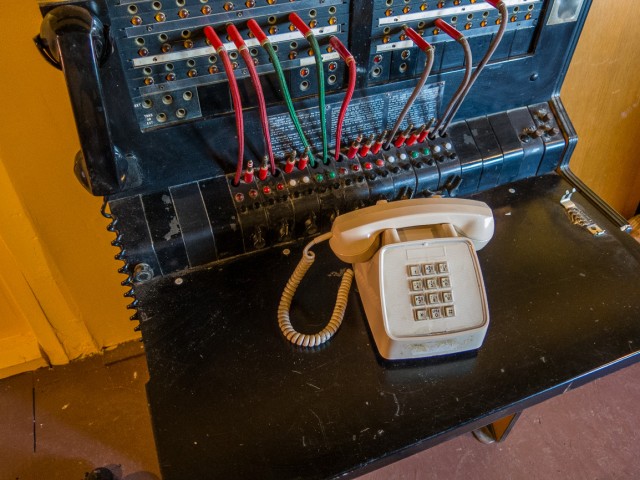
A very common (1970s-1990s) Northern Telcom NE2500 push button phone.
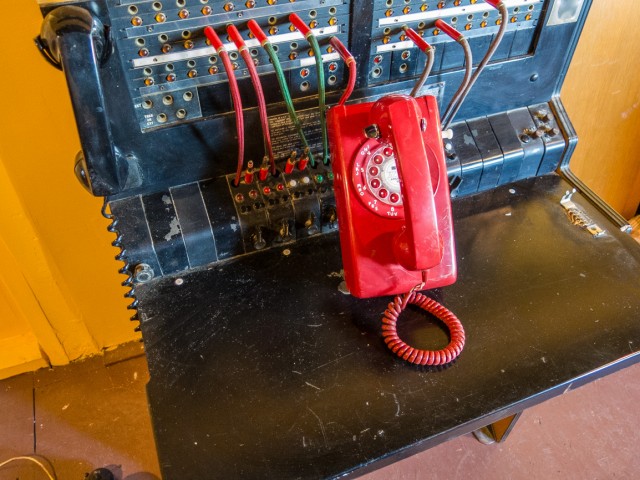
An less common colour for this model (Northern Telcom NE554).
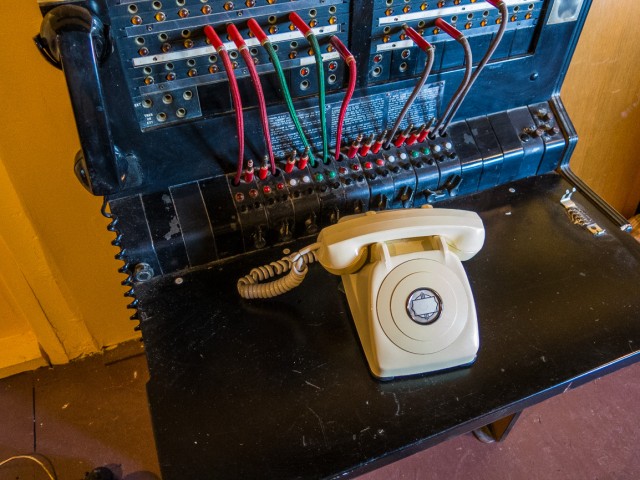
A dial-less courtesy phone (Automatic Electric Monophone).
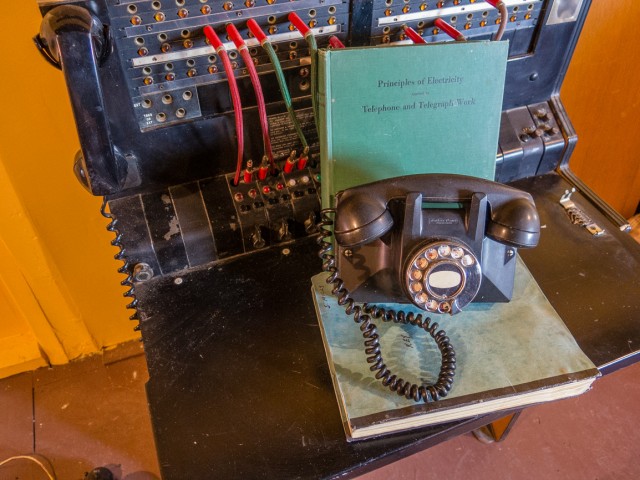
A post war Northern Electric Uniphone.

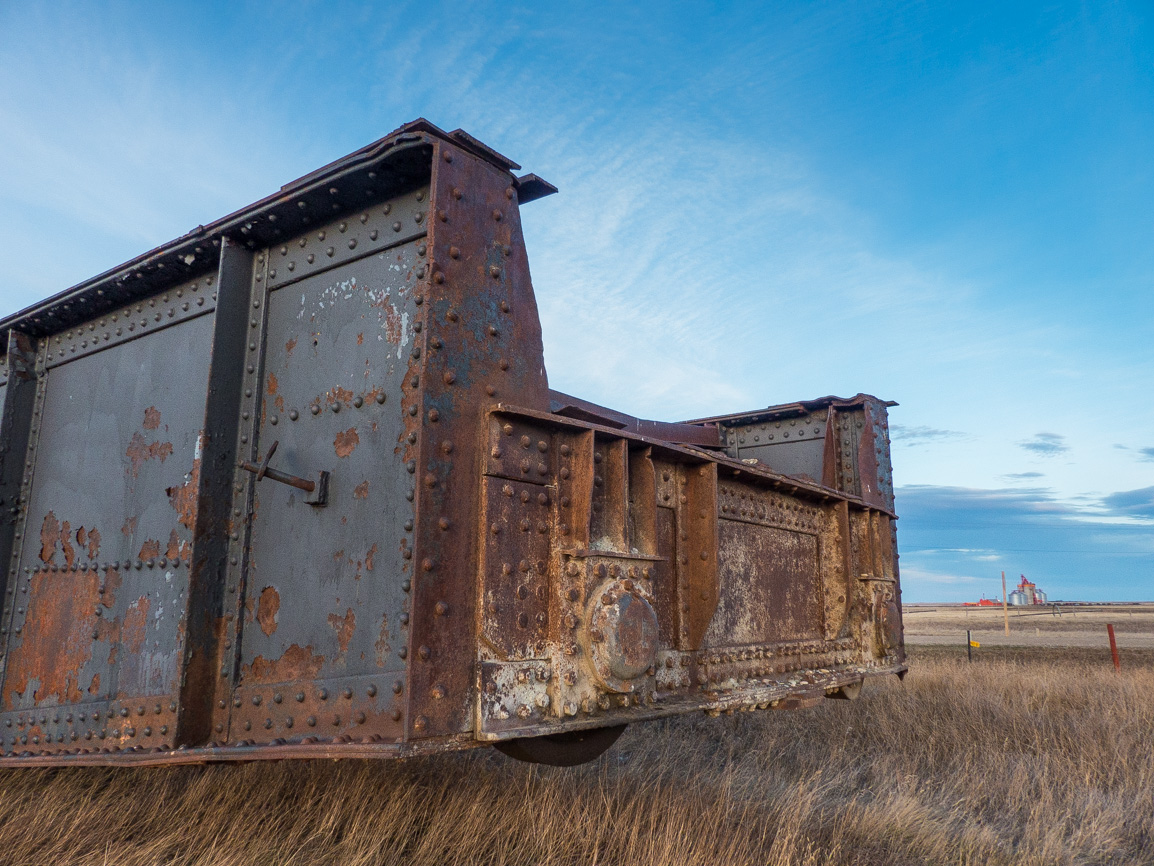
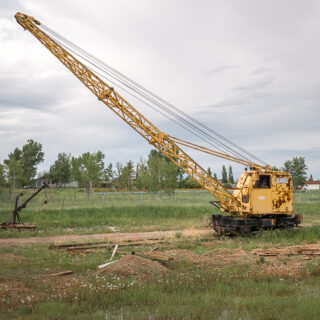
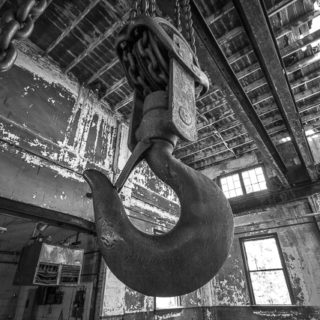
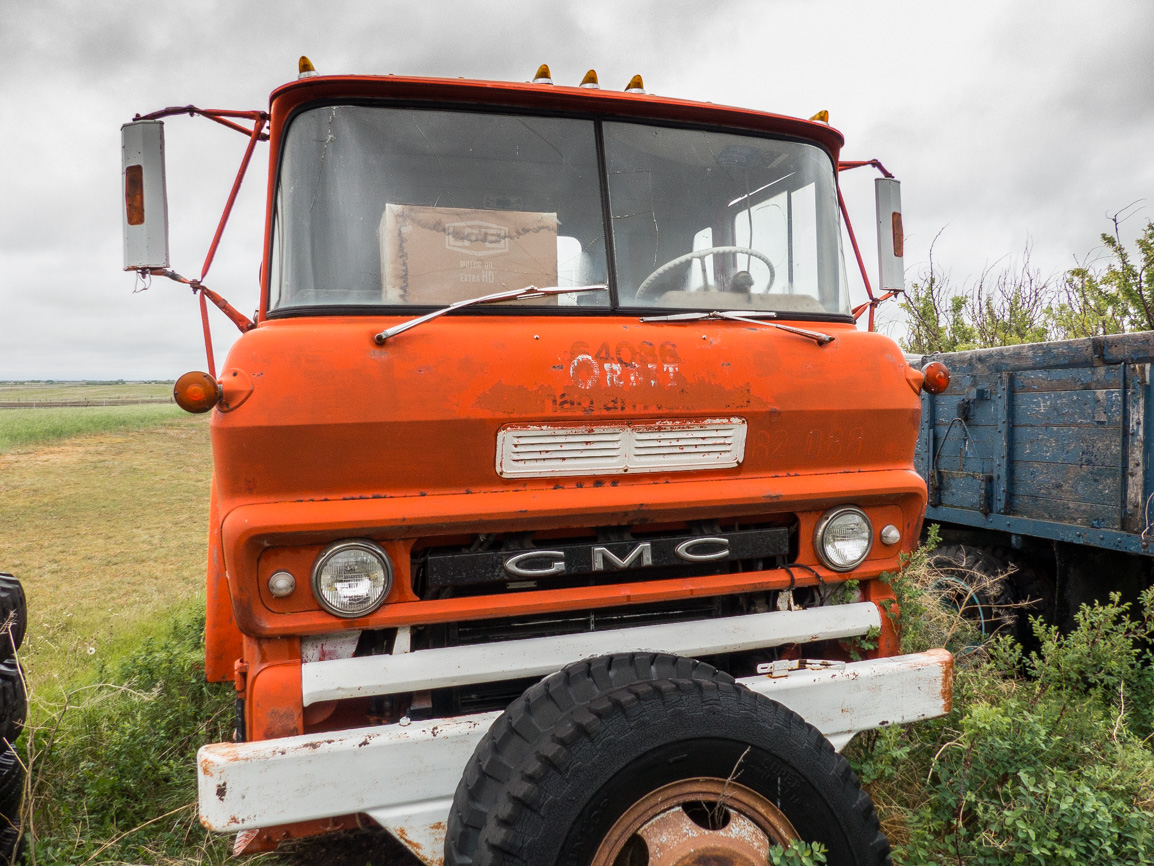
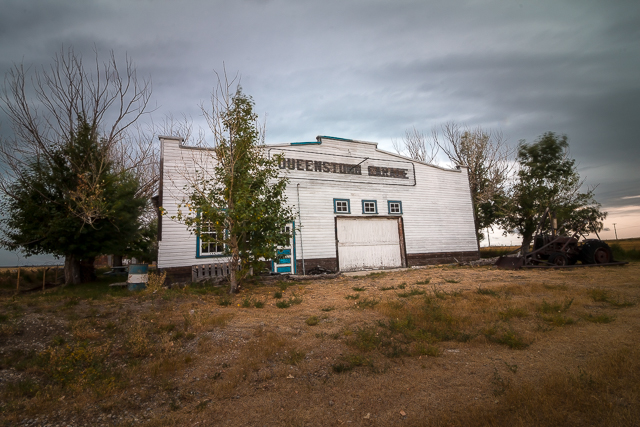
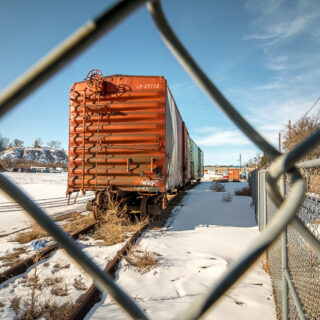
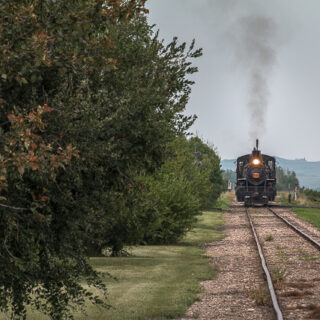
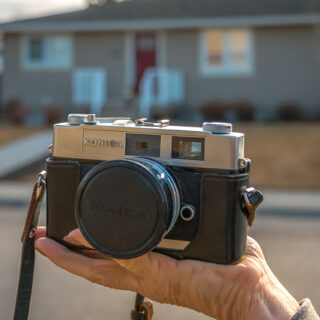
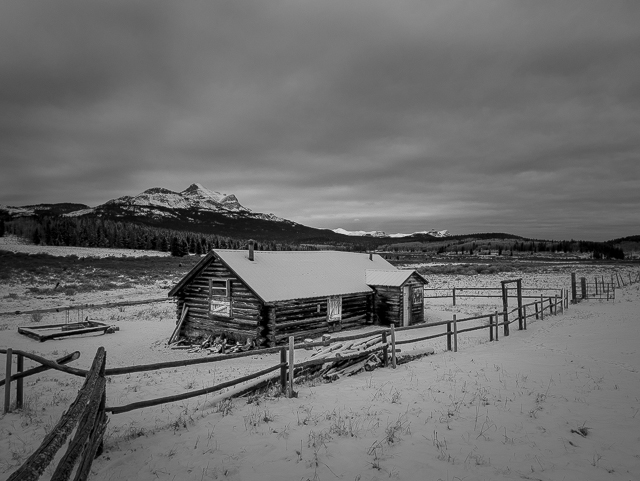
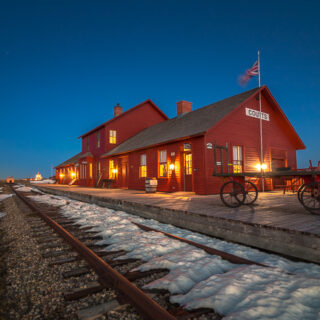
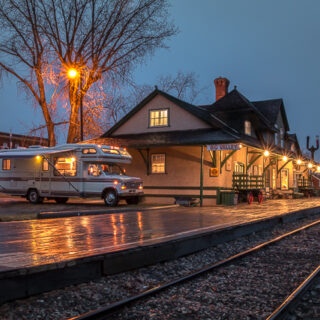
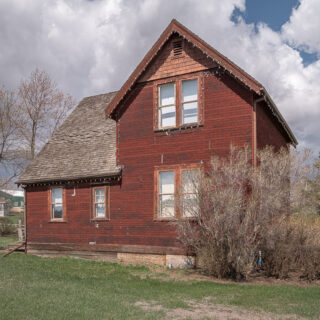
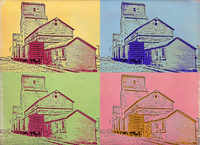






Nice phones . I have a couple ones like these phones that I keep (yes I collect).
Awesome! Helping set up this display brought back a lot of memories.
Wow! Nice article. I grew up in Stirling, Alberta and worked at Automatic Electric building telephones in the late 70’s.
Now that’s something! All the AE phone we found is this collection were pre-1970s, so none you built.
(via Facebook)
Awesome!! I’m not a phone nut by any means, but I do enjoy rotary dials like no tomorrow.
What’s not to love?
What are the prices and which 3 do I want? 😀
Too hard a decision. Take them all! Haha!